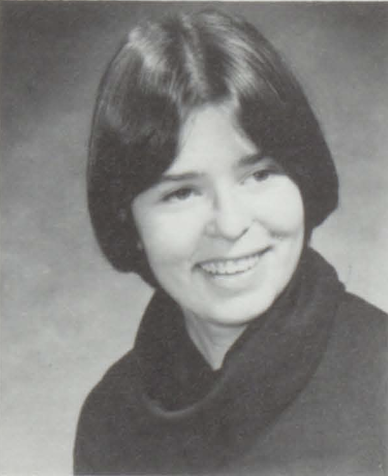 By Wendy Elkis Girnis, Class of '77
By Wendy Elkis Girnis, Class of '77
November 11th is Veterans Day. On that day, we honor all military veterans who have served in the U.S. Armed Forces. Interestingly enough, if you ask someone to describe a veteran, chances are they will describe someone who is male. Just recently, I attended my husband’s college reunion and was reminded that it isn’t only men who serve, but women too. His Niagara University graduating class had many of their female nursing students serve in the Vietnam War. Then I read the book, “The Women” by Kristen Hannah. All of that got me thinking about our women veterans, especially the nurses.
The Beginning
Throughout the history of our country, especially during times of war, women have tended to the wounded. In July 1775, George Washington requested one female nurse for every ten men. The women were paid $2 a month. This was actually the first organized nursing unit, even though it did not have training and was not considered part of the military.
During the War of 1812, wives, sisters, and mothers served as nurses who tended the soldiers’ wounds. Twenty-three of these Civil War 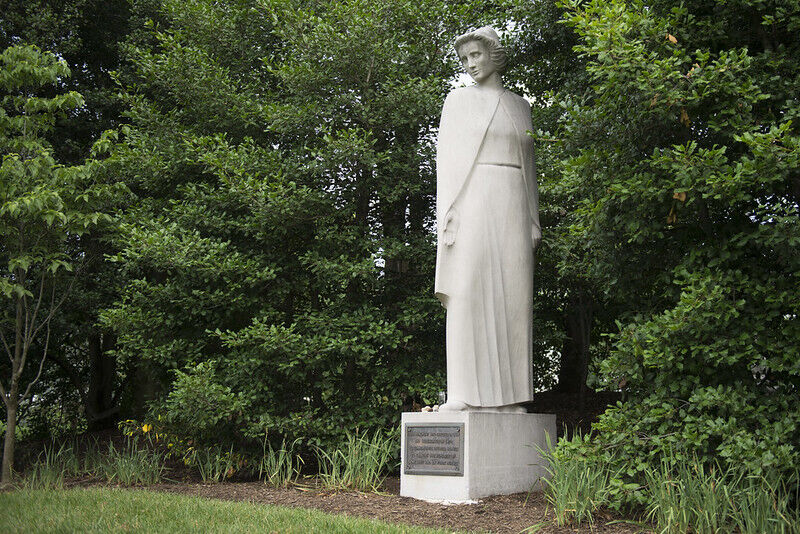 Nurses Memorial Statuenurses are buried in Section 21 at Arlington National Cemetery including;
Nurses Memorial Statuenurses are buried in Section 21 at Arlington National Cemetery including;
Anna Platt, who was the first nurse buried at Arlington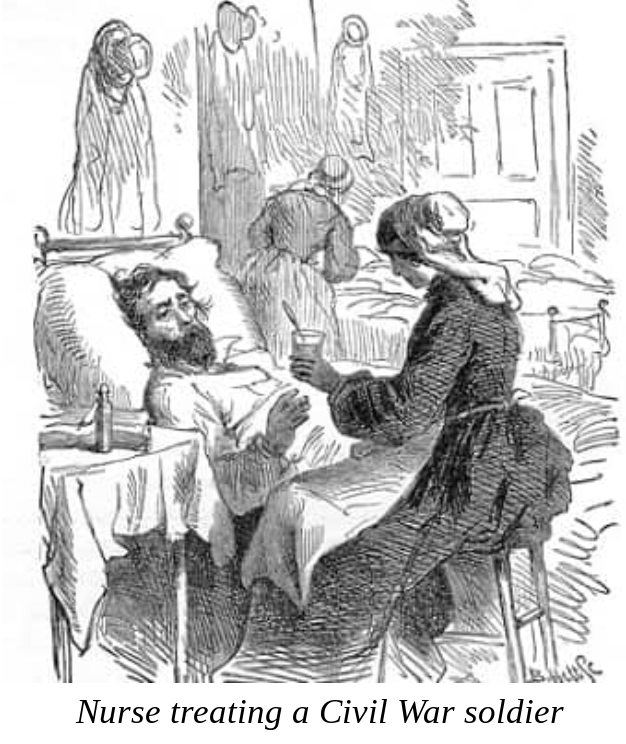
Adelaide Spurgeon, received an invalid's pension for her service
Caroline Burghardt, the youngest nurse, received an invalid's pension
Sarah E. Thompson, after her husband was killed, became a nurse. She also gave lectures on her experiences
Emma Southwick Brinton is one of three nurses at Fredricksburg, VA. Received an invalid's pension.
During the beginning of the Civil War, in 1861, two women made their marks on the nursing profession, Clara Barton and Dorothea Dix.
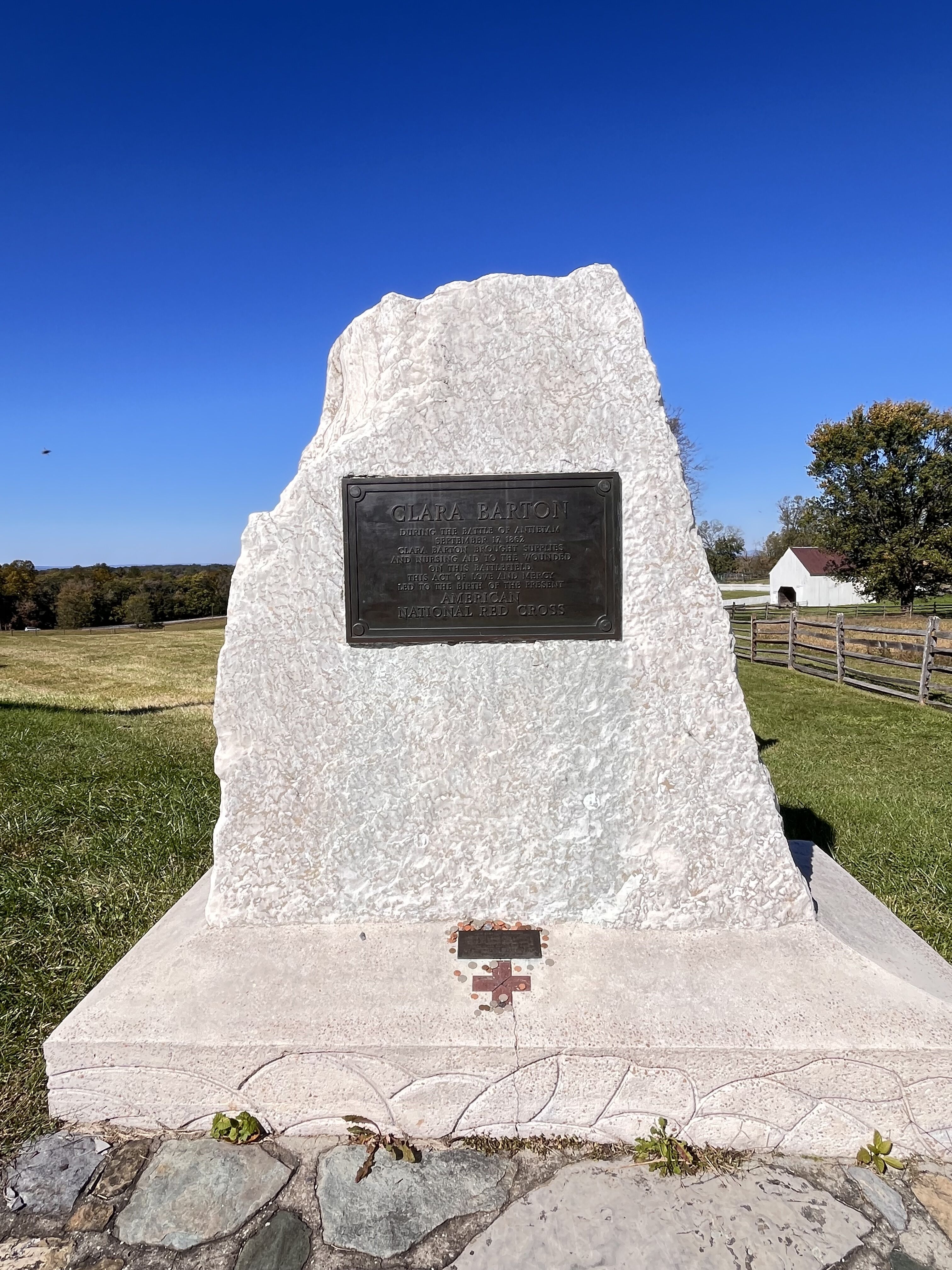 Clara Barton Monument AntietamClara Barton contributed a lot to the nursing and care of soldiers. During the Civil War, Barton delivered much-needed supplies to Union
Clara Barton Monument AntietamClara Barton contributed a lot to the nursing and care of soldiers. During the Civil War, Barton delivered much-needed supplies to Union 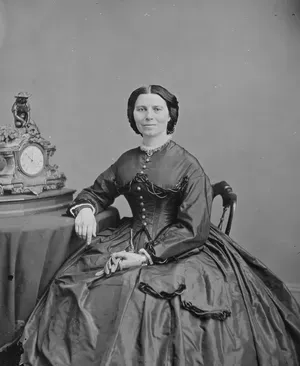 Clara Barton photograph Mathew B Brady 1866 soldiers. She assisted surgeons and tended to the wounded without formal medical training, earning her the nickname “Angel of the Battlefield.” Barton also helped to reconnect more than 20,000 soldiers with their families. Clara Barton Monument Antietam
Clara Barton photograph Mathew B Brady 1866 soldiers. She assisted surgeons and tended to the wounded without formal medical training, earning her the nickname “Angel of the Battlefield.” Barton also helped to reconnect more than 20,000 soldiers with their families. Clara Barton Monument Antietam
After the war, with permission from President Lincoln, she opened the Office of Missing Soldiers.
Dorothea Dix also transformed nursing. Once Congress authorized female nurses to work in Army hospitals, Dix became the Superintendent of Women Nurses for the Union Army. She had extremely high standards, but those standards helped advance the role of war nurses and nurses overall. Dix was also an advocate for formal training for nurses and pushed for better healthcare for the mentally ill, which helped to  Dorothea Dixrestructure hospitals here and abroad. In 1862, a formal nurse training program began at the New England Hospital for Women and Children. The training program at the New England Hospital was a one-year program that included 12-hour lectures that were required of all nursing students. The first trained nurse, Linda Richards, graduated in 1873. The first African American nurse, Mary Eliza Mahoney, graduated in 1879.
Dorothea Dixrestructure hospitals here and abroad. In 1862, a formal nurse training program began at the New England Hospital for Women and Children. The training program at the New England Hospital was a one-year program that included 12-hour lectures that were required of all nursing students. The first trained nurse, Linda Richards, graduated in 1873. The first African American nurse, Mary Eliza Mahoney, graduated in 1879.
By the time the Spanish-American War rolled around in 1898, Congress gave authority to the Surgeon General to appoint women nurses. They were paid $30 a month. 1,500 contract nurses signed up and were assigned to the Philippines and Cuba. Some of those 1,500 also included Native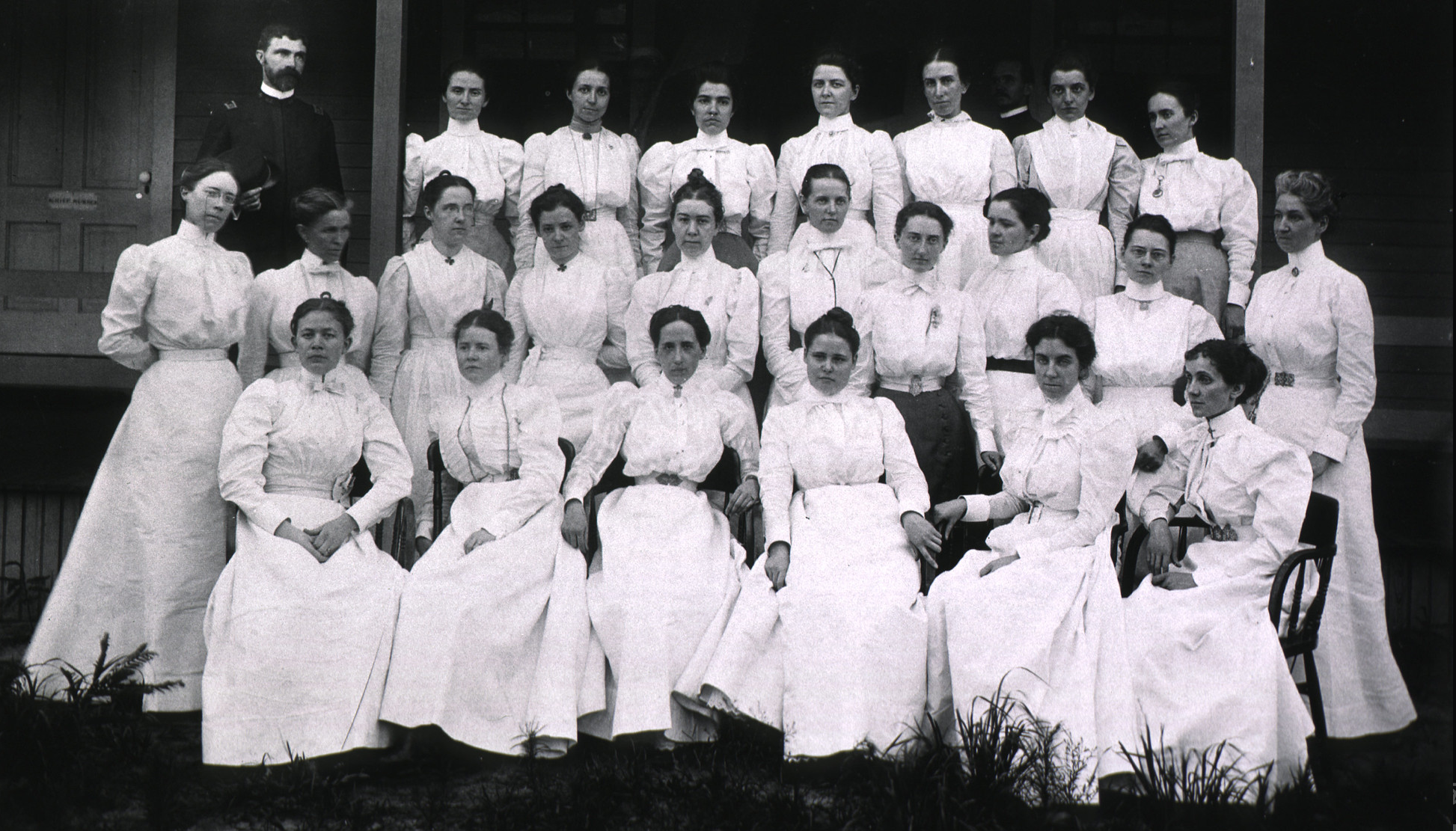 Spanish American War Nurses American women. Not only did they treat combat wounds, but they also treated diseases like malaria, yellow fever, and dengue fever. By the war's end, Anita Newcomb McGee, the only female acting assistant surgeon in the Army, had drafted legislation to establish the U.S. Army Nursing Corps. This legislation forever changed nursing.
Spanish American War Nurses American women. Not only did they treat combat wounds, but they also treated diseases like malaria, yellow fever, and dengue fever. By the war's end, Anita Newcomb McGee, the only female acting assistant surgeon in the Army, had drafted legislation to establish the U.S. Army Nursing Corps. This legislation forever changed nursing.
The Nurse Corps
The Army Nurse Corps (ANC) was officially established in 1901. The ANC was to support the Army Medical Department. These were the first women in the Army. Then, in 1908, Teddy Roosevelt signed the Naval Appropriations Bill establishing the Navy Nurse Corp (NNC). The Naval Medical School Hospital in Washington, D.C., received its first 20 women. Unfortunately, 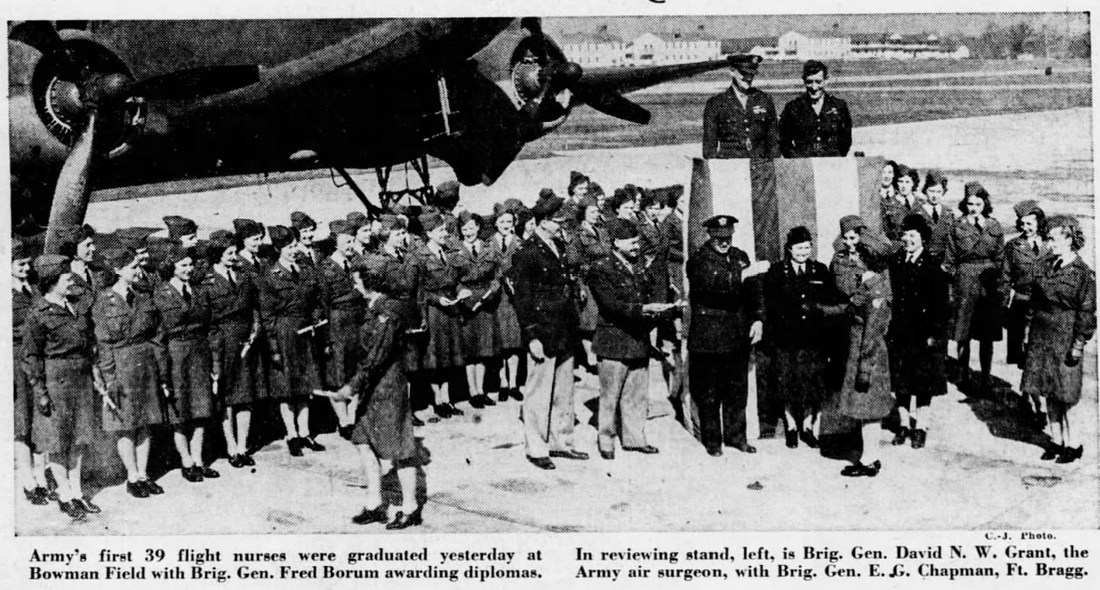 room and board were not included, so the women had to foot the bill. The ANC and the NNC had reserve units so that nurses would always be available in times of need. The Airforce Nurse Corp (ANC) began on July 1, 1949, when Army flight nurses were transferred to the Airforce.
room and board were not included, so the women had to foot the bill. The ANC and the NNC had reserve units so that nurses would always be available in times of need. The Airforce Nurse Corp (ANC) began on July 1, 1949, when Army flight nurses were transferred to the Airforce.
Since then, women have served as nurses in the military. In 1917, 20,000 women nurses were signed up by the Red Cross. These women served in American units. Although kept away from the battlefields initially, they were eventually moved closer. By 1920, they were given the relative rank of officer, but it wasn’t until 1947 that nurses received permanent commissions. Men weren’t admitted to the ANC until 1956.
A Dangerous Profession
Nurses serving faced many dangers. During WWII, the Japanese invaded the Philippines, forcing the US military to be pulled back to Bataan and Corregidor Island. The nurses served in harsh conditions. Open-air hospitals, sleeping in foxholes during bombings, and even donating their own blood for those in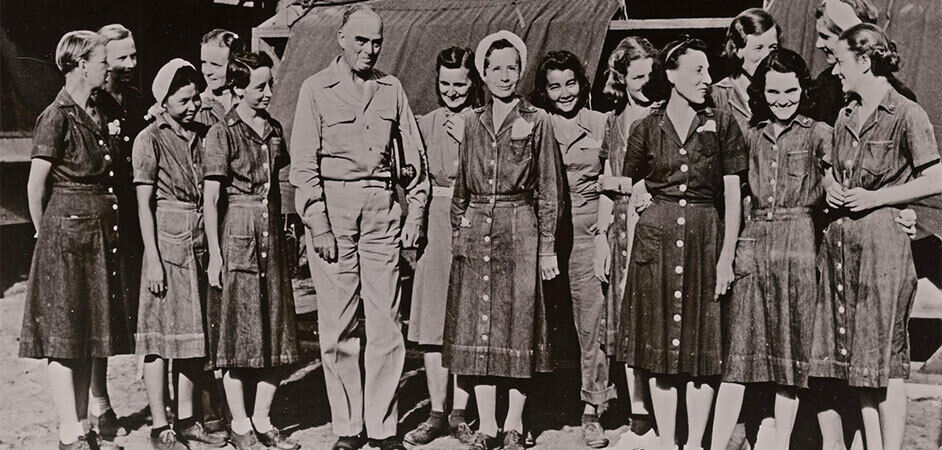 Nurses of Bataan need. In 1942, when the Japanese captured Bataan and Corregidor, 77 nurses were taken prisoner. Known as “The Angels of Bataan,” they took care of the prisoners while dealing with food and clothing shortages. They were finally repatriated in 1945.
Nurses of Bataan need. In 1942, when the Japanese captured Bataan and Corregidor, 77 nurses were taken prisoner. Known as “The Angels of Bataan,” they took care of the prisoners while dealing with food and clothing shortages. They were finally repatriated in 1945.
Altogether, 59,000 nurses were serving during WWII. Of those 59,000, there were 479 African American nurses due to the quota system. The first Black unit of 30 nurses was the 25th Station Hospital Unit. They were deployed to Liberia in 1943 to treat the Black troops. Due to low morale and disease, the unit was recalled in late 1943. The nurses were then dispersed between the South Pacific and England.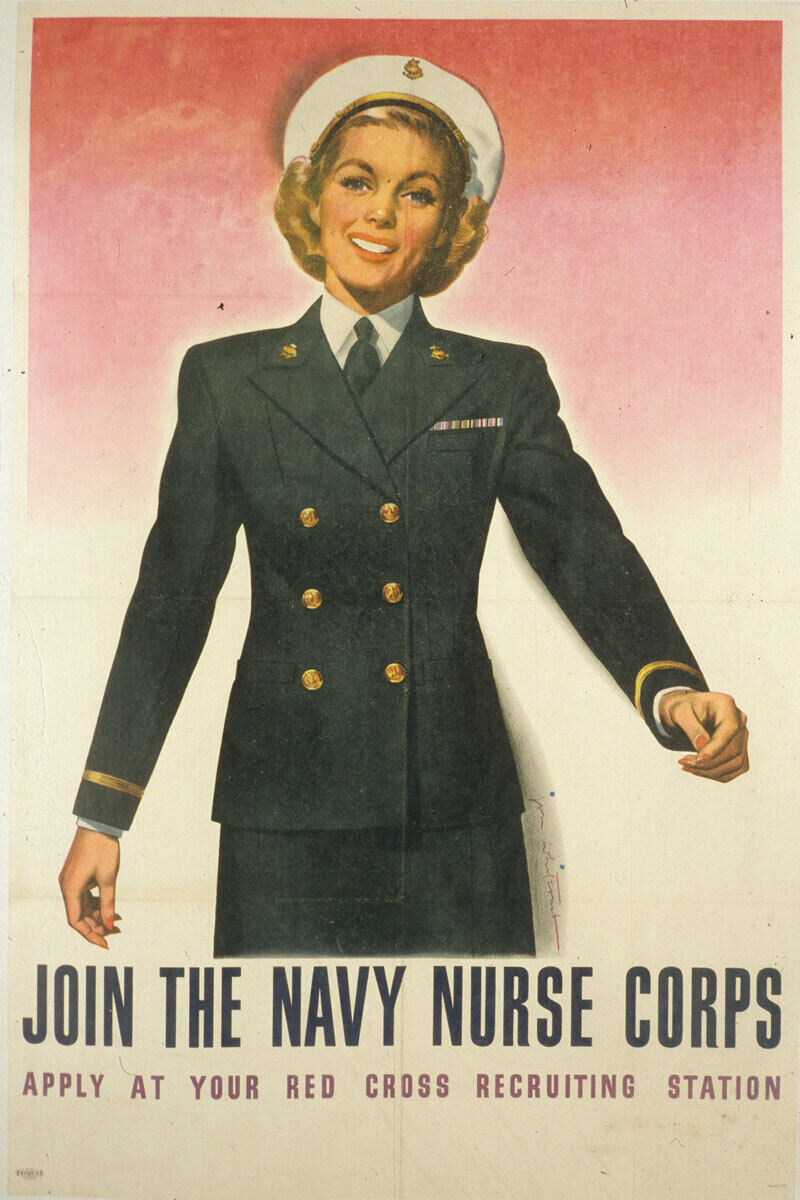 WWII Recruitment Poster
WWII Recruitment Poster
On June 6, 1944, D-Day, the Allies invaded the coast of Normandy, leaving 2500 men dead and scores wounded within the first 24 hours. Soon after, nurses were deployed and set up field hospitals to help with the thousands of wounded men.
First-Hand Accounts
The Library of Congress interviewed veterans for their Veterans History Project. One nurse interviewed was ANC First Lt. Ruth M. Dorsman, about her time helping the wounded in dangerous conditions after the invasion of Normandy. In her own words:
“Many times, shells and bombs landed dangerously close to our hospital—but fortunately, there were no direct hits,” she said. “We had no lights or heat in our living areas, and some nights could be pretty cold. Our water tank was kept full of drinkable water. We bathed in a helmet-full of cold water. Our toilets were slit trenches or a hole in the ground.” “I would not change those days in the Army for anything. I was proud to serve my country, and I’m proud to be an American.”
Another nurse interviewed was Marian Charlotte Jones. She spoke of her memories of serving after D-Day.
“Things I’ll never forget—the total destruction of whole towns,” said Jones. “Nothing left but a pile of rubble. The stench of rotting flesh. The booming sound of the 155-millimeter guns in the field behind us so loud it shakes the ground. The joy of a letter from home or a box of homemade cookies that you share … periods of unbearable homesickness.”
In Memoriam
Military nurses have also lost their lives. Some died from disease or accidents, and some died while performing their duties. The nurses were either in the Army Nurse Corp, Naval Nurse Corp, or Airforce Nurse Corp.
4 ANC and 19 NNC nurses died in WWI
200 ANC, 11 NNC, and 14 AFN nurses died in WWII
1 ANC nurse and 29 NNC nurses died in the Korean War
9 ANC nurses and 1 AFN died in Vietnam
4 female nurses died in the Iraq War
As you might have noticed, I did not include any information about Vietnam nurses or those who served in Iraq or Afghanistan. I hope our readers can supply first-hand accounts of those military heroes. If you were a military nurse or wounded and want to recognize a military nurse even if they weren't from Hicksville, we would love to hear your story to print it for our Veterans' Day Issue.
Resources
https://www.nps.gov/articles/philippinesmilitarynurses.htm
https://www.health.mil/About-MHS/Military-Medical-History/Historical-Timelines/Nurses
https://www.nationalww2museum.org/war/articles/nurse-pows-bataan-and-corregidor
https://www.health.mil/News/Dvids-Articles/2024/06/04/news472895
https://www.history.army.mil/books/wwii/72-14/72-14.HTM
https://e-anca.org/History/Fallen-ANC-Warriors-OIF-OEF
https://www.history.com/news/nursing-women-civil-war
https://www.archives.gov/research/military/korean-war/nurses.html
Images
Nurse Treating Civil War Soldier- http://www.civil-war-facts.com/Interesting-Civil-War-Facts/Civil-War-Nurses-Facts.html
Clara Barton Monument at Antietam - Photo by Wendy Girnis
Clara Barton Photograph - Mathew Brady 1866
Dorothea Dix - https://www.pbs.org/newshour/health/dorothea-dixs-tireless-fight-to-end-inhumane-treatment-for-mental-health-patients
Nurses Memorial - https://www.arlingtoncemetery.mil/Blog/Post/12997/Remembering-the-Sacred-20-at-Arlington-National-Cemetery
ANC Sacred 20 - https://www.arlingtoncemetery.mil/Blog/Post/12997/Remembering-the-Sacred-20-at-Arlington-National-Cemetery
Angels of Bataan - https://www.amightygirl.com/blog?p=24228
Graduation Ceremony Bowmen Field - https://www.thisdayinaviation.com/tag/army-nurse-corps/
MASH, 121st Evacuation Hospital, U.S. Army, 45th Infantry Division - https://www.metrolibrary.org/archives/image/2020/05/45th-infantry-army-nurses-121st-evacuation-hospital
Spanish American War Nurses - https://www.flickr.com/photos/nlmhmd/52764724648

